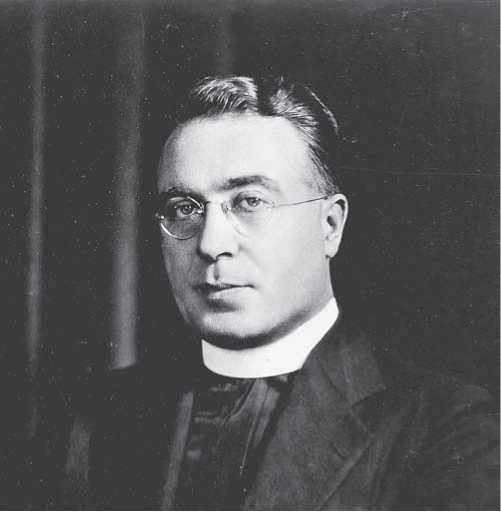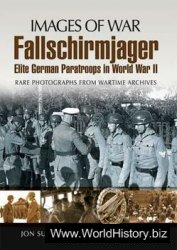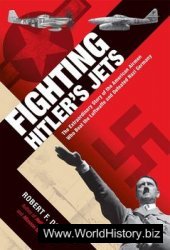The Battle of the Coral Sea took place from May 3 to May 8, 1942. The Imperial Japanese Navy had been on the offensive since the attack on Pearl Harbor in December 1941, and by the spring of 1942 was threatening Australia. Suffering from what has been called the “victory disease,” the Japanese overreached themselves. At the Battle of the Coral Sea, the U. S. Navy was able to check Japanese expansion to the south; and although tactically neither side achieved full victory, strategically the battle was a significant American success. The battle was also important for revealing the new realities of naval warfare in which aircraft carriers, not battleships, were the major force: Surface ships never encountered each other, and the battle was fought entirely by planes from the two fleets’ aircraft carriers.
To cut off Australia from U. S. support, the Japanese aimed to win control of the Coral Sea, bordering Australia to the north, by taking over Port Moresby, on the southwest tip of New Guinea, and Tulagi in the Solomon Islands. But American intelligence was able to track movements of the Japanese fleet and to break the Japanese code, thus allowing Admiral Chester W. Nimitz to have two carrier groups ready to meet the Japanese. The battle began on May 3, with the Japanese invasion of Tulagi, though it did not reach full scale until May 7. On that day, the Americans were able to sink a Japanese light carrier and force the Japanese to abort their Port Moresby invasion. The battle ended on May 8, 1942, after a fierce naval air battle. The Japanese temporarily lost use of two of their most valuable ships, the badly damaged carriers Shokaku and Zuikaku, on this day, and retreated from the Coral Sea, ending their attempt on Port Moresby and their pressure on Australia. Because the American carrier Lexington was lost as a result of the action (and the carrier Yorktown damaged), the Japanese had something of a tactical edge in the battle; and the Japanese control of Tulagi would be significant in later combat in the Solomons. But the Japanese advance south toward Australia had been halted, and because of the Battle of the Coral Sea, the Japanese could not use their damaged carriers Shokaku and Zuikaku a month later at the pivotal Battle of Midway.
See also air power; World War II Pacific theater.
Further reading: Ronald Spector, Eagle against the Sun: The American War with Japan (New York: Free Press, 1985).
—Michael Moore
Coughlin, Father Charles E. (1891-1979) priest, radio personality
Father Charles Edward Coughlin, the controversial “radio priest,” was an important figure in American politics in the 1930s and organized an unsuccessful political challenge to President Franklin D. Roosevelt in the election of 1936.
Coughlin was born on October 25, 1891, in Hamilton, Ontario, Canada, and at the urging of his mother decided to enter the Roman Catholic priesthood. He taught at Assumption College in Ontario and then received his first, and only, parish—the Shrine of the Little Flower outside Detroit in Royal Oak, Michigan. Using the relatively new medium of radio in an effort to raise funds for his struggling parish and increase its membership, Father Coughlin gave his first radio sermon on October 17, 1926. The program quickly became popular, and the donations sent to Father Coughlin allowed him to syndicate his show in 1929 and reach listeners throughout most of the Midwest. When he began broadcasting The Golden Hour of the Little Flower on CBS in 1930, Coughlin was heard by up to 40 million Americans every Sunday night.
Until 1930, Father Coughlin’s radio program was primarily religious in nature. But as the Great Depression

Father Charles E. Coughlin (Library of Congress)
Deepened, his sermons became more overtly political, as he denounced President Herbert C. Hoover and the group he blamed for the depression—international bankers. By 1932, Coughlin had become an enthusiastic supporter of Franklin D. Roosevelt, whom he believed would radically reform the American economy. “Roosevelt or Ruin,” he told his audience. Roosevelt, aware that Coughlin reached millions of listeners, cultivated the radio priest’s support. However, although Coughlin saw himself as a critical component of Roosevelt’s victory in the election Of 1932, the relationship was never a close or personal one. By 1934, frustrated by his lack of influence and by the banking policy of the First New Deal and the administration’s efforts to regulate rather than dismantle big business, Coughlin broke with Roosevelt.
In November 1934, Coughlin created the National Union for Social Justice (NUSJ) and used the organization to increase his following and challenge Roosevelt and the New Deal. At the heart of the NUSJ platform were its demands for establishing a central bank, nationalizing public utilities, and increasing the coinage of silver. Attracting a following dominated by working-class and lower-middle-class Catholics who found Coughlin’s populist message appealing, the NUSJ claimed to have 8 million members at its peak in 1936. In addition, millions more were sympathetic to Coughlin’s message attacking international bankers and political parties and calling for radical monetary reform.
An apparent test of Coughlin’s power came in the Senate debate of early 1935 over the United States joining the World Court. Coughlin saw the World Court as dominated by the same international bankers he blamed for the depression, and he urged his listeners to call, telegram, and write to their senators to vote against the World Court. When the Senate voted against membership, it seemed that Coughlin had proven his political muscle. But the unsuccessful political party that he created in the presidential election of 1936 revealed how limited the radio priest’s power really was.
In 1936, Coughlin, Dr. Francis Townsend, and Gerald L. K. Smith, who had taken over the Share Our Wealth program following the death of Huey Long, joined to form the Union Party. The new party nominated North Dakota congressman William Lemke for president, but it lacked both unity and organization and Lemke won less than 2 percent of the popular vote. The results reflected the facts that Coughlin’s followers also tended to support Roosevelt and that they overwhelmingly preferred Roosevelt to Coughlin’s candidate. Coughlin himself hurt the Union Party by denouncing the popular FDR as “anti-God” and as “Franklin Double-Crossing Roosevelt.” Rejected by the voters, denounced by superiors in the Catholic hierarchy, and likening himself to the martyred Jesus Christ, Coughlin announced his retirement from public life after the election.
Unhappy out of the spotlight, Coughlin resumed his radio show in January 1937, but his popularity was never the same. He became increasingly anti-Semitic; when he began speaking favorably of Adolf Hitler and Benito Mussolini in 1940, he lost all but his diehard supporters and his radio show was taken off the air. A fringe figure by the time the United States entered World War II, Coughlin left the public arena for good in 1942. As part of the government’s censorship of far right - and left-wing groups, the postmaster general prohibited delivery of Coughlin’s magazine, Social Justice, and the attorney general arranged to have Coughlin’s archbishop silence him. Father Coughlin then retreated back to his parish. He retired in 1966 and died an obscure figure in 1979.
See also anti-Semitism.
Further reading: Alan Brinkley, Voices of Protest: Huey Long, Father Coughlin, and the Great Depression (New York: Knopf, 1982); Donald I. Warren, Radio Priest: Charles Coughlin, the Father of Hate Radio (New York: Free Press, 1996).
—Katherine Liapis Segrue




 World History
World History









